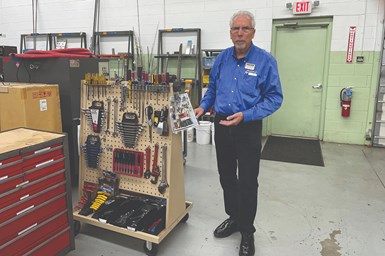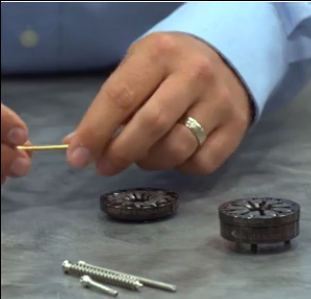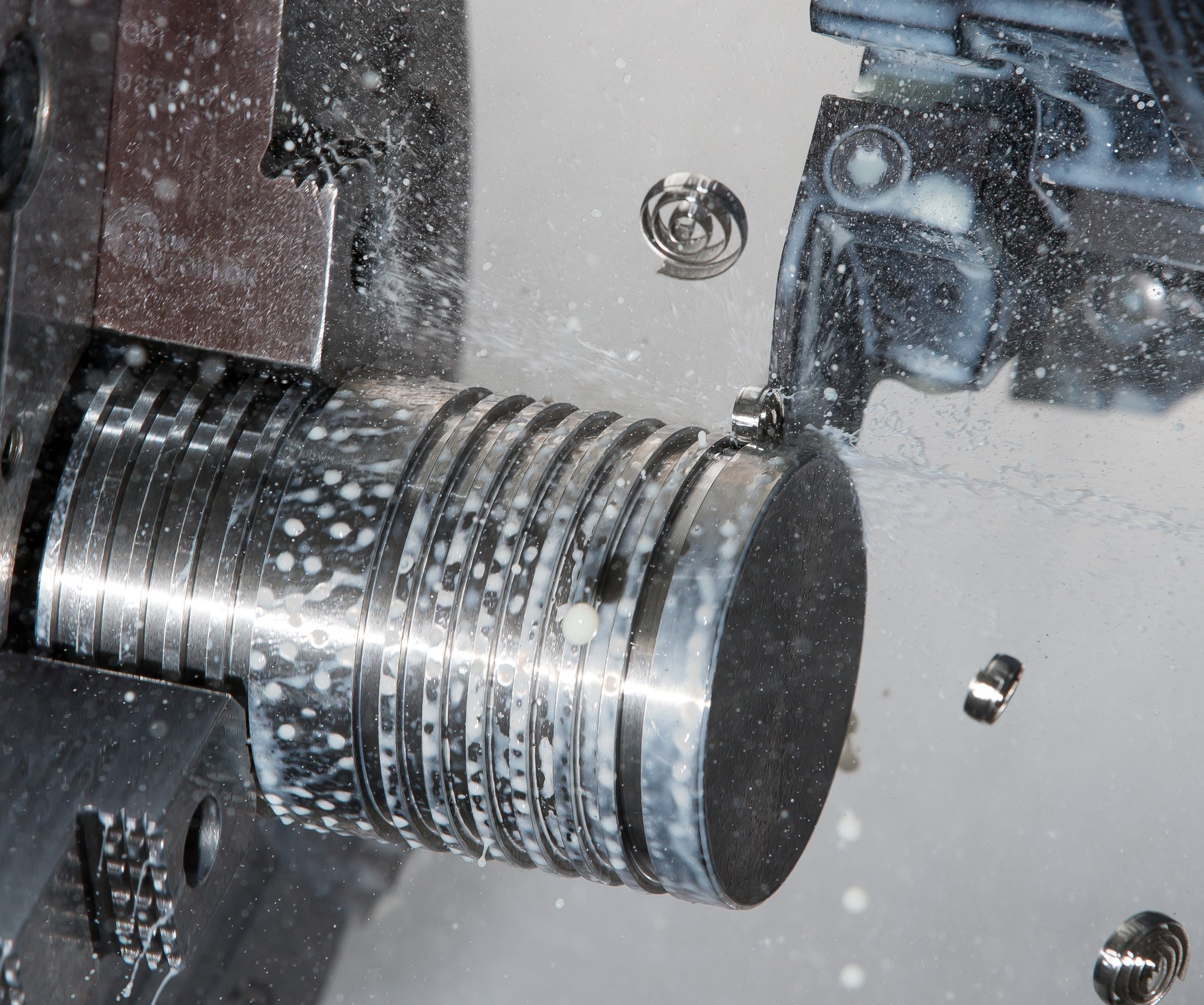5-S: Ask a Toolmaker
A place for everything and everything in its place. A visit to Fischer Special Tooling during PMPA’s Mastery Program provided a glowing example of the 5-Ss: Sorting, Setting in order, Shine, Standardize and Sustain.
#pmpa

Miles Free at Fischer Special Tooling. Photo Credit: PMPA
One of the most despised statements that I heard when I first entered the workforce was “Do as I say. Not as I do.” Did I mention despised? What kind of leadership is that?
PMPA’sMastery Program visitedFischer Special Toolingin Mentor, Ohio, to see the process by which their special tools come to life. Little did we know that we would also get a real-life, in-person demonstration of how 5-S, housekeeping, standard work and other cultural best practices knit together to expedite production of sophisticated tools (the toolmakers’ tolerances are typically one tenth of ours.)
Featured Content
5-S: A Place for Everything and Everything in its Place.
And so much more. One of the biggest problems that we as manufacturers deal with daily is variation and variability. With variation comes differences, and with differences come opportunities to fail or fail to meet tolerances. Rejection! Using standard methods or standard work is one way to reduce variation and process variability. Many of us see standard work as the means of managing an overall process. But 5-S is standard work for ordering our workplaces. If our workplaces are standardized, that reduces the opportunity for unwanted variation.
5-S is more than just organizing our tools.It is a means to ensure that our tools are, in fact, suitable for use — clean and in good repair, calibrated if necessary and in the location where we expect them to be. When we need them, they’ll be there. This reduces nonproductive time, the waste of waiting and, by having the right tool at the right place at the right time, ensures that our adjustments and methods are standard across shifts, days and crews.
Reducing variability is key to holding tight tolerances. 5-S is an important part of that achievement. But 5-S is more than just Sorting (a place for everything) and Setting in order (and everything in its place), Shine, Standardize and Sustain are the final three “S’s” and the photo shows how the team at Fischer achieves these.
Shine.The photo above is straight off a smartphone — no editing. The yellow handles of the T wrenches at the bottom show some evidence of use, but are not grimy or covered with sludge. The pegboard must certainly be contacted
many times a day by workers’ hands and yet appears clean and bright. Look how bright. How clean. Shine is captured honestly by the lens. This workplace is convicted of “shine.”
Standardize.This is the process by which everything stays in its place. In many shops, they paint a shadow in the shape of the tool to provide a visual reminder of what belongs in the space. At Fischer, they made visual photos showing which tool belongs where on the cart. This sets the standard and shows everyone — even a visitor from a trade association office — where to replace the item taken from the cart. Standards documented are standards held.
Sustain.在这张照片中,一个被用于文档照片ument the contents of the cart and the location of each item. If you look closely, you can see that there is also a photo on the other side of the cart — it shows which tools belong where on the other side of the cart. This visual means/record of what is on the cart and what belongs where provides a powerful reminder to all to replace any items removed where they belong.
Magic.The clean, bare, light wood surface on the rolling tool drawer unit to the left of this photo is “magic” to my eyes. In my life experience, horizontal surfaces are provided as a place to put “stuff.” In many shops, we typically find shop rags — typically soiled — collections of partially or completely used up carbide inserts and a myriad of shop flotsam and jetsam that washes up on the nearest horizontal surface.
In this shop, a place for everything and everything in its place means that everything — even the random rags and tool inserts and other debris — are actually where they should be and achieving their own highest and best use by being located where they are supposed to be.
If you ever wondered how it is that the toolmakers that provide your tools are able to work to tolerances that are just a tenth of the ones that you struggle to hold all day in difficult material — well, the answer might be the magic of having clean, bright, horizontal uncluttered surfaces. Standard work for tool storage. And a culture of care that sustains these techniques.
They say a picture is worth a thousand words. This photo gave me 770.
Read More Articles fromPMPA:
About the Author
Miles Free III
Miles Free III is thePMPADirector of Industry Affairs with over 40 years of experience in the areas of manufacturing, quality, and steelmaking. He helps answer “How?, “With what?” and “Really?” Miles’ blog is atpmpaspeakingofprecision.com; email –mfree@pmpa.org; website –pmpa.org
RELATED CONTENT
Quality — A Better Definition for Manufacturing
Quality is a critical factor in manufacturing. Has the definition changed over the years?
Happy Workers are Good Workers
According to an extensive study in 2019 by the Oxford University’s Saïd Business School, a conclusive link between happiness and productivity was found — happy workers are 13% more productive.
How Do We Fix American Manufacturing?
In America, many have lost sight of the fact that the object of the act of manufacturing is not merely the generation of maximum profit, but instead the creation of value.















